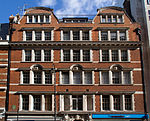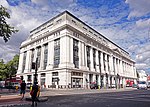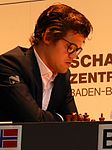Sicilian Avenue

Sicilian Avenue is a pedestrian shopping parade in Bloomsbury, London, resembling an open air arcade, that diagonally runs in between Southampton Row and Bloomsbury Way. The street was designed by the architect Robert Worley in 1906 (completed in 1910) in a monumental Edwardian style, using Italian marble throughout, colonnades and turrets.The place is well-preserved, and has a number of shops, pavement cafés and restaurants.Above the commercial activities located on the ground floor, five storeys buildings decorated with terracotta bands are occupied by offices (formerly flats). Ionic columns on plinths, carrying the street name in gold characters, have been placed at both the eastern and western entrances of the avenue.Several scenes of the 2018 film The Guernsey Literary and Potato Peel Pie Society were filmed in Sicilian Avenue, as was a scene from the 2017 film Wonder Woman.1–29, 6–20, 25–35 and 35A are listed Grade II on the National Heritage List for England. The three lamp posts on Sicilian Avenue are also listed Grade II.
Excerpt from the Wikipedia article Sicilian Avenue (License: CC BY-SA 3.0, Authors, Images).Sicilian Avenue
Sicilian Avenue, London Holborn (London Borough of Camden)
Geographical coordinates (GPS) Address Nearby Places Show on map
Geographical coordinates (GPS)
| Latitude | Longitude |
|---|---|
| N 51.518486111111 ° | E -0.12131666666667 ° |
Address
Spaghetti House
Sicilian Avenue
WC1A 2QH London, Holborn (London Borough of Camden)
England, United Kingdom
Open on Google Maps









